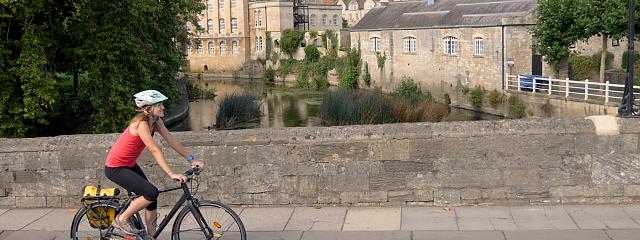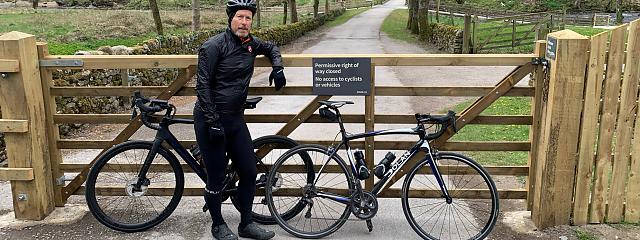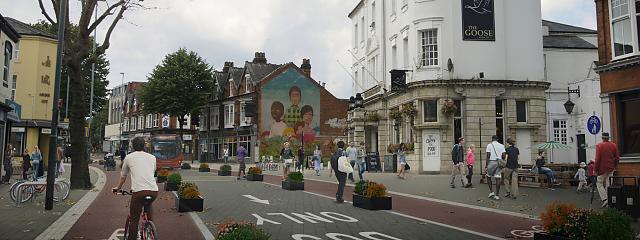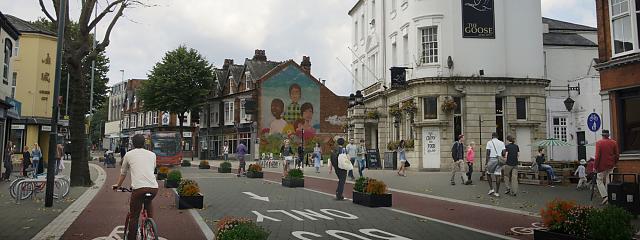
Take action: Help keep our rights of way network open for everyone
Take action: Help keep our rights of way network open for everyone
If you’re anything like me, we may only be ten days into the UK lockdown but you still haven’t quite got used to the twitchy feeling of looking out of the window every time the sun comes out, longing to be outside.
Fortunately, Government guidelines still allow us to go out for a ride, run or walk each day, alone or with members of our own household. While we’re being told not to drive to places to exercise, now is the time to discover those routes close to home that you never thought to explore. Investigating your local bridleways is a great way to get out while avoiding popular spots and maintaining social distancing.
However, there has been some confusion about where we can go, especially in Wales where section 4 of the new coronavirus regulations gives ‘relevant authorities’ powers to close off footpaths, bridleways and access land if they are highly used and likely to promote the spread of the virus.
Who can close off rights of way?
Specific authorities in Wales have been given the power to close rights of way under the coronavirus regulations - Welsh county councils or county borough councils, National Park Authorities, Natural Resources Wales or the National Trust. See list of closures by council area.
The powers only apply to these specific relevant authorities, but over the past couple of weeks there have been a few instances of landowners taking matters into their own hands to close off paths. While they may be understandably concerned about the spread of coronavirus, these closures are unauthorised as the power to temporarily close rights of way rests only with relevant authorities.
Unauthorised path closures have also been seen on a few occasions in England, despite there being no official regulations or powers to close off rights of way to prevent the spread of coronavirus.
What are landowners able to do?
Defra and the Welsh Government have issued guidance to landowners in England and Wales confirming that public rights of way should remain open and unobstructed, but recommending:
- Tying gates open if it is safe to do so, so that users do not need to touch the gate.
- Temporarily displaying polite notices that encourage users to respect local residents and workers by following social distancing guidelines and consider using alternative routes that do not pass through gardens, farmyards or schools.
- Offering an alternative route around gardens and farmyards only where it is safe to do so provided that the original right of way is maintained.
The rights of way network across England – and the vast majority in Wales – is still available to use and it’s crucial that it remains that way. The more options people have for places to go and exercise locally, while taking sensible precautions, the easier it will be to maintain social distancing.
This is where you can help to ensure that other people can keep using their local routes, by reporting any obstructions you spot out on your ride.
How to report blocked rights of way
The good news is it’s usually fairly simple to flag up any problems with the local authority when you get home. The Highway Authority (county council or unitary authority) is responsible for making sure rights of way are open and easy to use.
There is more information in our guide to reporting rights of way obstructions.
While council rights of way teams may be restricted in their ability to go out and physically check obstructions at the moment, they’ll still be able to sort out most issues by making contact with the landowner.
Wales
If a path has been officially closed there should be a sign to explain that the local authority has decided to close it. You can also check which rights of way are closed on council websites. Landowners are not authorised to unilaterally restrict access to rights of way, so if there is no sign it’s probably not official.
Some councils have an online tool to report obstructions on rights of way – if you can’t find one, you can use the Ramblers Pathwatch tool which covers England, Wales and Scotland and sends reports to the relevant local authority.
England
Unlike in Wales, coronavirus regulations in England do not give local authorities the power to close rights of way, and neither are landowners able to.
The majority of councils have an online tool you can use to report issues with rights of way (it will look something like this) – everything from obstructions to missing signage and overgrown vegetation. If you search for the name of the county council plus ‘report problem right of way’ you should find it.
By keeping rights of way open and easy to use, we can help make sure that people are able to exercise from their door and use their local routes, to help us all stay healthy while maintaining social distancing.
Cycling UK guidance
You can leave your house for one form of exercise a day – such as cycling, running or walking.
It remains advisable for people to cycle for their health, fitness and well-being, but you should only do this alone or with members of your household (unless any of them have reason to self-isolate).
Under no circumstance should you take part in any cycling activity in groups.
There is no set time limit, but you should ‘minimise’ the time you spend outdoors.
Keep it local and take it easy – now is not the time to take on big challenges and risk injuries.










